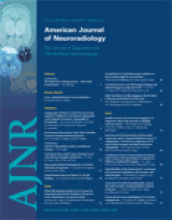Article Figures & Data
Tables
Total n = 2535 Neurosurgical n = 1881 Endovascular n = 654 P* Mean Age (SD), years 53.9 (12.9) 53.8 (12.2) 53.9 (15.0) .83 Male (%) 26 25 31 <.05 Medicaid (%) 9 8 9 .66 Admission Source (%) <.0001 Home 84 83 88 Emergency Department 11 13 6 Transfer 5 4 6 Region (%) <.05 West 22 20 27 South 33 33 33 Midwest 11 12 11 New England 8 8 7 Mid Atlantic 26 27 22 * Pearson χ 2 test and t test used to evaluate statistical significance for categoric variables and continuous variables, respectively, comparing neurosurgical and endovascular groups. Significant P values are groups into 4 categories: <.05, <.01, <.001, <.0001.
Diagnosis or Procedure Category Total n = 2535 Neurosurgical n = 1881 Endovascular n = 654 P* Postop neurological complications 6.8 7.4 (140) 4.7 (31) <.05† Cranial nerve palsy (IIIrd, VIth) 6.0 7.0 (132) 2.9 (19) <.0001 Mechanical ventilation 5.0 5.6 (106) 3.1 (20) <.01† Physical or occupational therapy 5.0 6.0 (113) 2.1 (14) <.0001 Hemiplegia or hemiparesis 4.3 4.0 (76) 5.2 (34) .21† Occlusion of cerebral artery 3.8 4.2 (79) 2.8 (18) .10† Packed red blood cell transfusion 3.8 4.5 (85) 1.7 (11) <.01 Other complication/postop infection 3.8 4.5 (85) 1.5 (10) <.001† Endotracheal tube 3.5 3.9 (74) 2.3 (15) <.05† Ventriculostomy 2.9 3.4 (63) 1.7 (11) <.05† Hematoma complication 2.8 2.7 (50) 3.2 (21) .46 Postop respiratory insufficiency 2.5 2.8 (52) 1.8 (12) .19† Aphasia 2.1 2.2 (42) 1.7 (11) .70 Hydrocephalus 2.1 1.9 (36) 2.5 (16) 0.41† Gastrostomy 2.0 2.3 (44) 1.1 (7) <.05 Headache 1.6 1.5 (29) 1.7 (11) .80 Tracheostomy 1.5 1.6 (30) 1.1 (7) .34 Postop cardiac complications 0.8 0.9 (16) 0.5 (3) .32 Monocular vision loss 0.5 0.5 (10) 0.5 (3) .82 Ventriculoperitoneal shunting 0.5 0.5 (9) 0.5 (3) .95 Note:—Values are presented as % (n).
* Pearson χ 2 test used to evaluate differences between neurosurgical and endovascular groups. Significant P values are groups into 4 categories: <.05, <.01, <.001, <.0001.
† Conditions significantly (p <0.0001) more likely to occur in death cases compared with nondeaths
Total n = 2535 Neurosurgical n = 1881 Endovascular n = 654 P* Overall Adverse outcomes (n) 11.5% (292) 13.2% (249) 6.6% (43) <.0001 In-hospital death (n) 2.1% (53) 2.5% (47) 0.9% (6) <.05 Length of stay†‡ (SD) 6.8 (6.2) days 7.4 (5.7) days 4.5 (4.7) days <.0001 Hospital charges†¶ (SD) $46,250 (36,470) $47,567 (35,426) $42,044 (37,286) <.0001 Emergency department admissions only n = 274 n = 234 n = 40 Adverse outcomes (n) 16.8% (46) 18.4% (43) 7.5% (3) .11§ In-hospital death (n) 5.5% (15) 6.4% (15) 0.0% (0) .14§ Length of stay†‡ (SD) 10.4 (7.3) days 10.4 (6.5) days 10.6 (11.3) days .07 Hospital charges†¶ (SD) $60,161 (43,117) $60,544 (41,687) $57,840 (51,085) .24 Non-emergency department admissions n = 2261 n = 1647 n = 614 Adverse outcome (n) 10.9% (246) 12.5% (206) 6.5% (40) <.0001 In-hospital death (n) 1.7% (38) 1.9 % (32) 1.0% (6) 0.11 Length of stay†‡ (SD) 6.3 (5.7) days 7.0 (5.3) days 4.2 (4.2) days <.0001 Hospital charges†¶ (SD) $44,408 (34,842) $45,554 (33,725) $41,020 (36,128) <.0001 * Pearson χ 2 test and Student t test used to evaluate statistical significance for categoric and continuous variable, respectively, comparing neurosurgical and endovascular groups, unless otherwise specified. Significant P values are grouped into 4 categories: <.05, <.01, <.001, <.0001.
† Natural log transformed variables then converted to original units. Values are mean (SD).
‡ n = 2530 due to nonreported length of stay, n = 2256 excluding emergency department cases, n = 274 ED cases.
§ Two-tailed Fisher Exact test used to compared neurosurgical and endovascular groups
¶ n = 2109 due to nonreported charges, n = 1866 excluding emergency department cases, n = 243 ED cases.
n = 2535 Ratio (95% CI)* P* Power (%) Neurosurgical/Endovascular Adverse outcome 1.7 (1.2, 2.5) <.05 82 In-hospital death 2.3 (0.97, 5.7) .06 45 Length of stay† 1.8 (1.6, 2.0) <.0001 100 Hospital charges† 1.3 (1.2, 1.5) <.0001 97 Emergency department admissions only Adverse outcome‡ 2.7 (0.8, 8.5) .10 39 In-hospital death§ Length of stay† 1.3 (0.9, 1.7) .12 43 Hospital charges† 1.2 (0.9, 1.7) .24 19 Excluding emergency department admissions Adverse outcome 1.6 (1.1, 2.4) <.05 71 In-hospital death 2.0 (0.7, 5.8) .18 26 Length of stay† 1.9 (1.7, 2.0) <.0001 100 Hospital charges† 1.3 (1.2, 1.5) <.0001 97 * Results are derived from generalized estimating equations and are adjusted for age, sex, admission source, region, year of treatment, insurance status, comorbidity score, and hospital treatment volume. Odds ratios are reported for dichotomous outcomes. Significant P values are grouped into 4 categories: <.05, <.01, <.001, <.0001.
† Natural log values of lengths of stay and hospital charges were used in models; results are ratio of geometric mean days and ratio of geometric mean dollars, respectively.
‡ Results are derived from generalized estimating equations and are adjusted for age, sex, admission source, region, insurance status, and hospital treatment volume.
§ Multivariable model not feasible due to zero deaths in the endovascular group.












